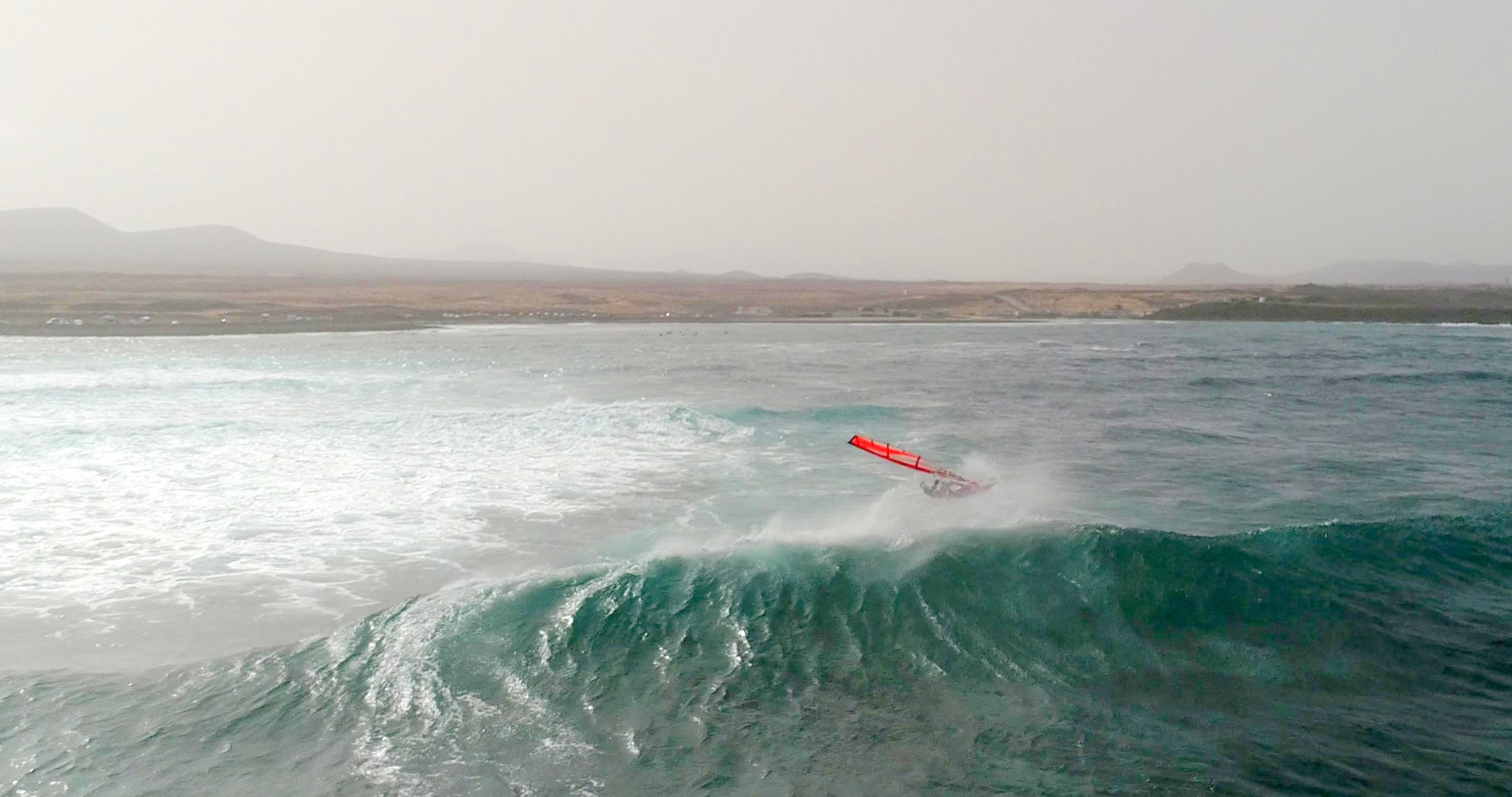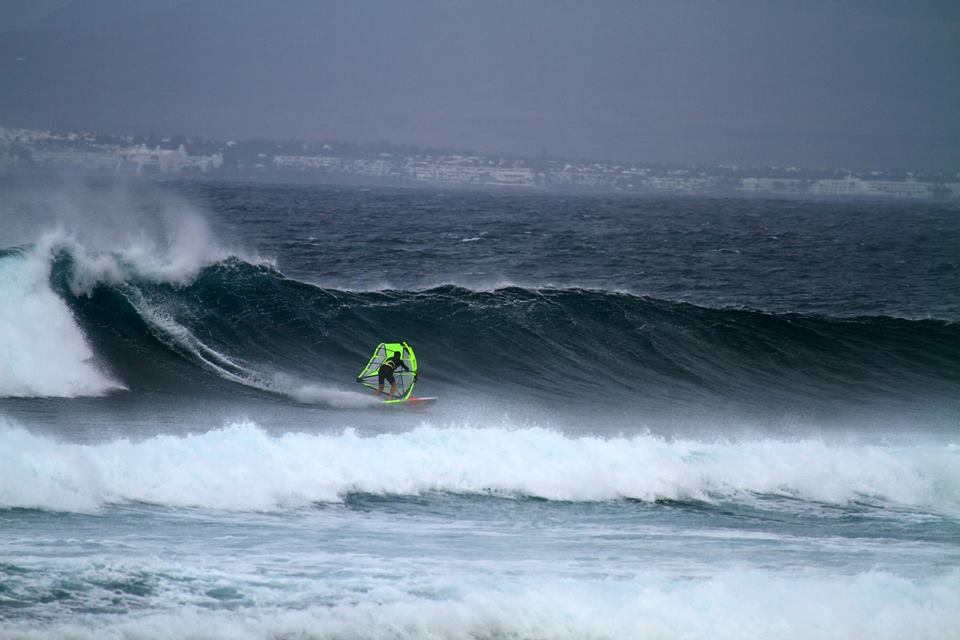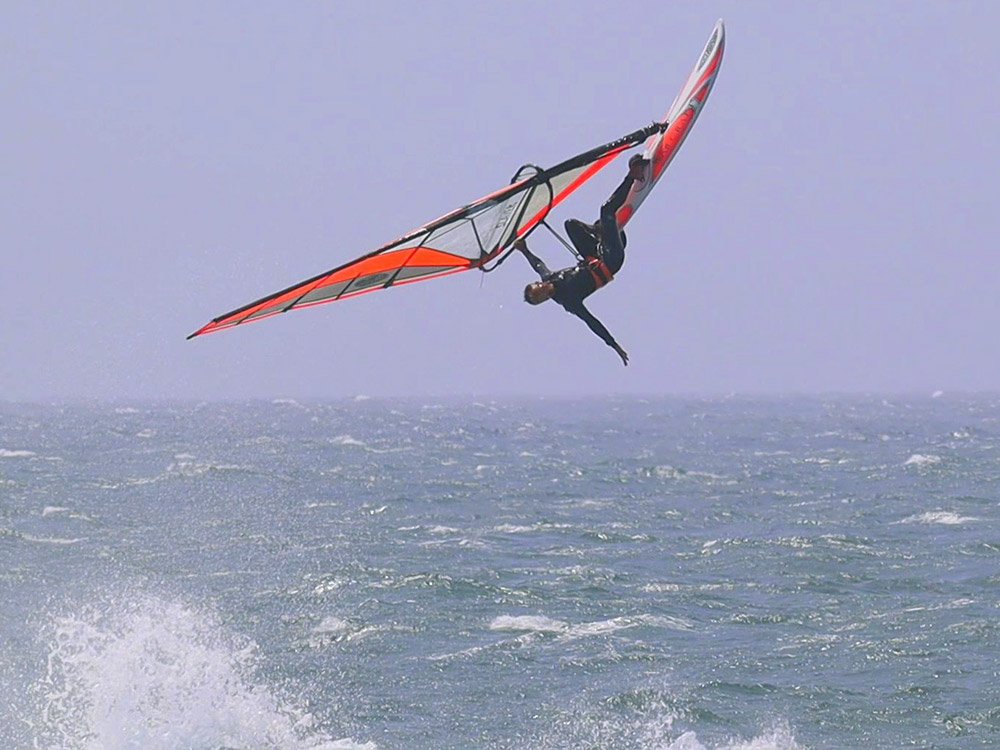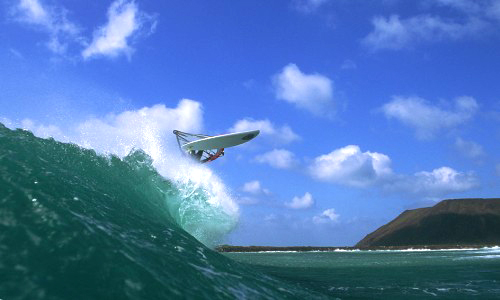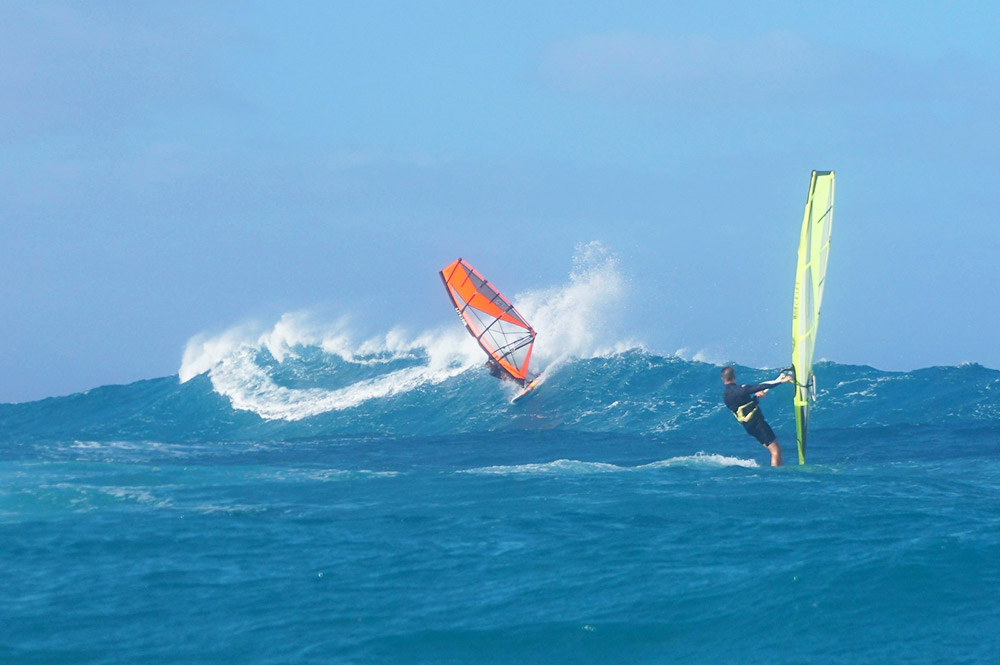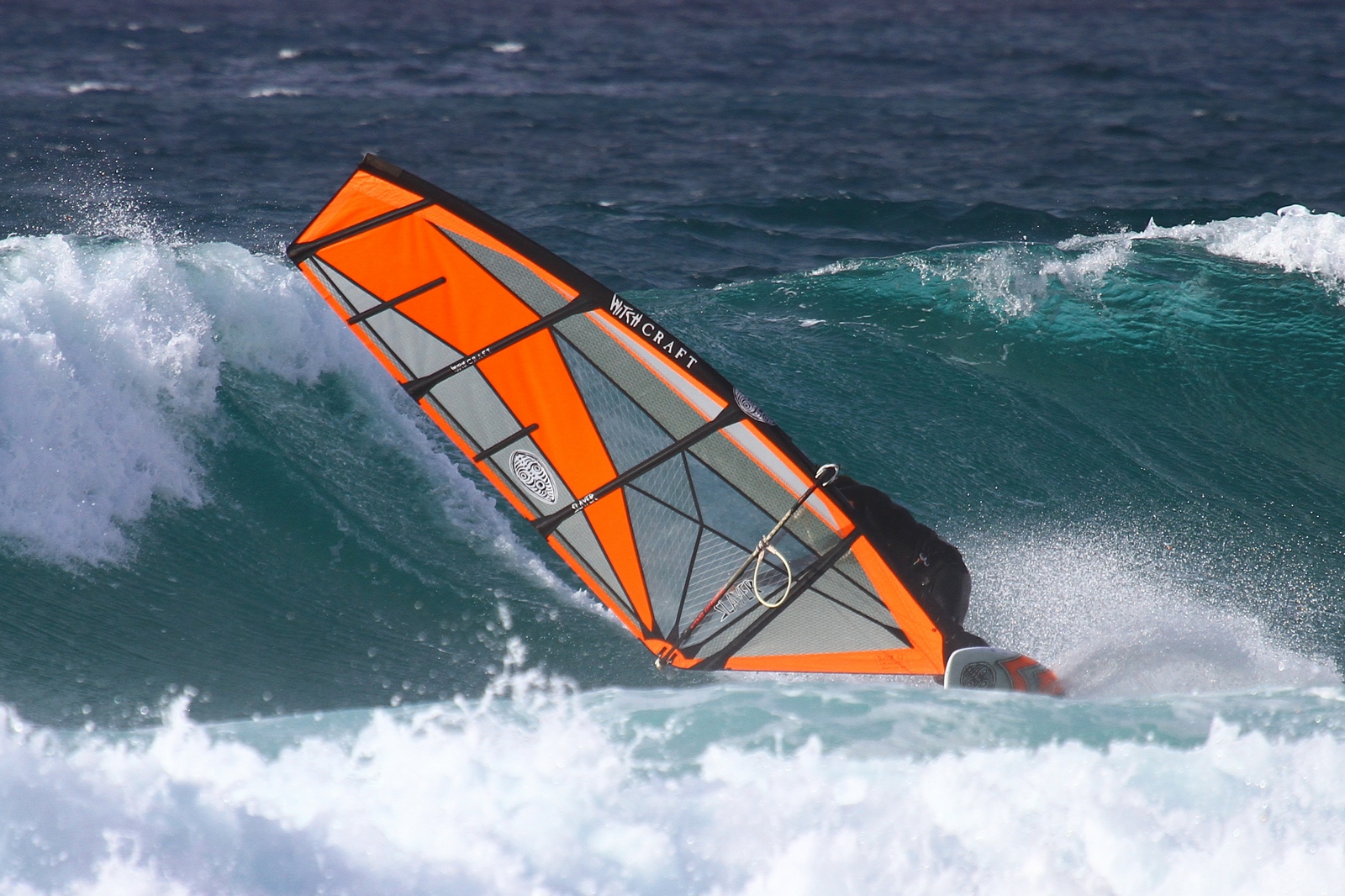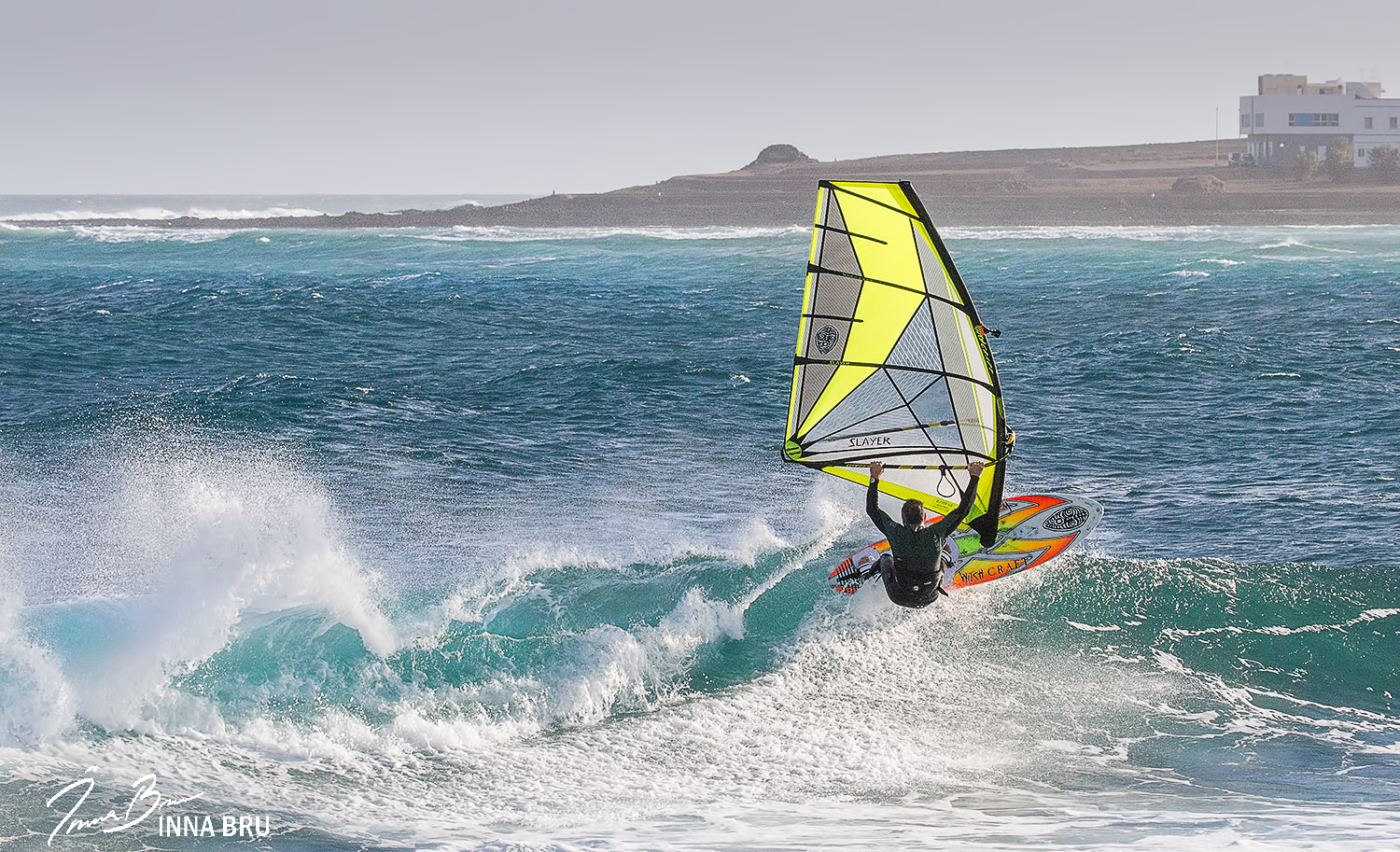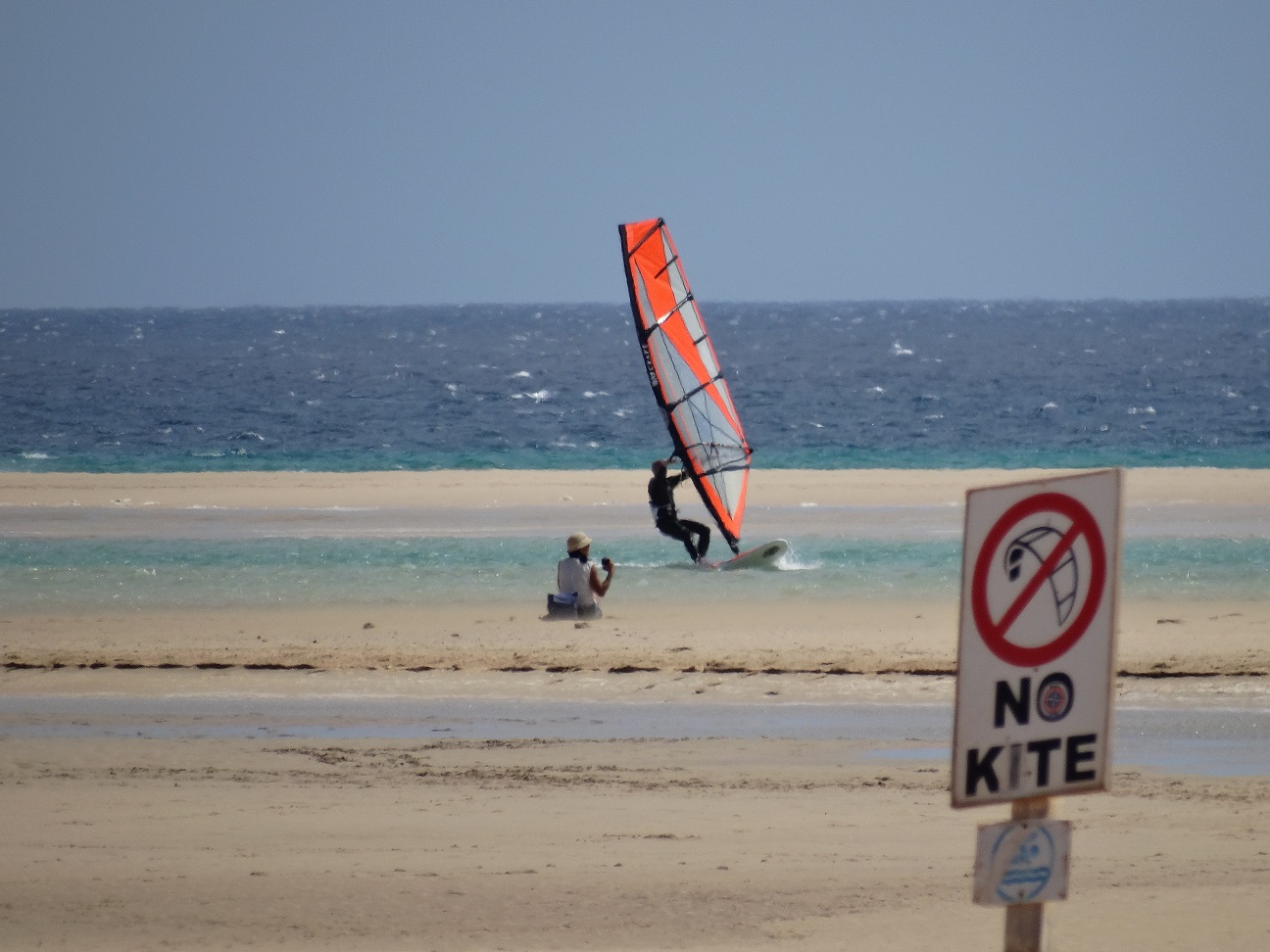SPOT GUIDE: GENERAL INFO
Some general info: Fuerte´s north shore probably offers the highest amount of days with wind AND waves of all Canary Islands, varying between 150 and 190 wave sailing days per year. And about 70% of those days are side shore conditions. Average amount of wavesailing days per month through the year:
Jan:11, feb: 13, march: 18, april: 22, may: 18, june: 21, july: 25, august: 22, september: 5, oct: 4, Nov: 6, dec: 9
There are about 15 spots in total. Below is more information on the most frequently sailed spots.
Jumping spots are: Punta Blanca (starboard tack), Rocky Point (both tacks) Flag beach (at low tide), Puerto Lajas on the south reef and Sotavento when there´s waves (all port tack).
Cross to cross off shore riding: Cotillo, Majanicho, Lobos (all starboard tack) and La Caleta, Bristol, Flag beach, Glass beach, Puerto Lajas (all port tack) and Rocky Point and Hierro (both tacks)
Best ground swell (W to N directions): from october till april
Summer (wind) swell (NNE to NE direction): april till august. (Summer waves on Fuerteventura are usually 50 to 100% bigger as other Canary Islands, both due to swell size as bottom shape)
Best wind probability: from march till august, with the highest average of windy days around march/april and july/august.
Best cross to cross off riding conditions: october till april. This includes float and ride conditions. We have high volume wave boards available at our test centre.
N-NE wind directions are stronger as predicted at Sotavento
SWerlies are stronger as predicted on the North Shore
